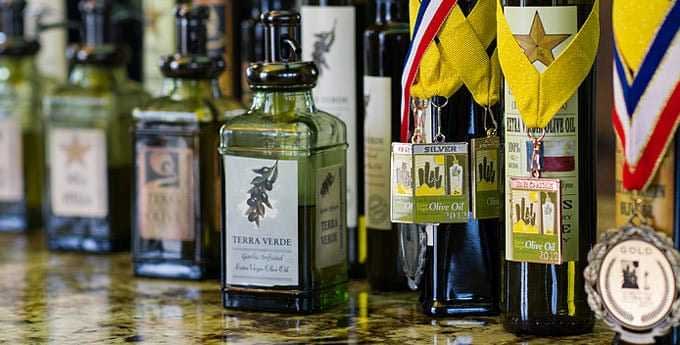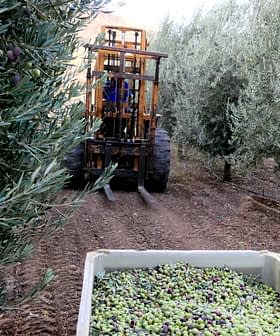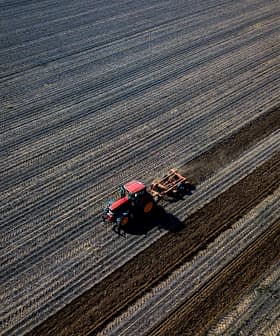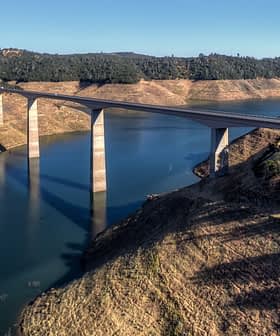
Texas Agricultural Commissioner Todd Staples (far right) and Jim Henry (second from right) with fellow Texan olive oil pioneers
Texas has long been known for its crude oil. Black gold. Texas tea. But, another kind of oil is making headway. Liquid gold. Oleum olivae. Olive oil.
Plantings of the first olive trees in Texas preceded the first producing crude oil wells by more than 150 years; nevertheless, crude oil was the first oil to boom in Texas. However, olive oil’s time has finally arrived. Drawing inspiration from successful tree plantings in the early 1900’s, Trigg Dealey and Jim Henry, co-founding directors of the Texas Oil Council, became key players in the beginnings of the Texas olive oil industry.
In the 1990’s, Dealey and business partner Baxter Adams planted 168 Italian olive trees near San Antonio to test the viability of olive oil there but the trees were eventually lost to a freeze. Meanwhile, businessman Jim Henry was also experimenting with plantings in different soil types and climate zones. Henry said that he “planted 20 to 40 acres in the wrong place and had to move them.”
Henry then planted the state’s first commercial orchard in the south. Encouraged by the results, he and his partners Karen Lee, Jerry Farrell and Penny Farrell created the Texas Olive Ranch and planted 40,000 trees. The ranch produced 3,000 gallons of olive oil in its first harvest in 2007 and has since won medals for its olive oils.
A large-scale new investment is underway with Henry’s purchase of land in Victoria, Texas near the Gulf Coast. Henry plans on planting 300,000 new olive trees in the area.
Henry explained that “we finally figured out where to put the trees. The growing zones in the hill country and south Texas brush country have lots of temperature fluctuations in the spring. The secret to good production is to have a temperature during the blooming process and fruit set that is not too volatile.” He believes that the Gulf Coast offers a favorable moderate climate, particularly during the critical January through March period.
Henry envisions the new orchards as a tourism draw. The ranch is located on Highway 59 which is a major thoroughfare from Houston to south Texas.
“Over 100,000 cars each day go right past the orchard. We bought the land for its highway visibility,” says Henry. “Many Americans have no clue that olives are grown in America. Showing the orchard to people who drive by is better than any other way to advertise the industry,” Henry added.
Bringing Texas-grown extra virgin olive oil to consumers is also Karen Lee’s objective. Her company, Cowgirl Brands, LLC in Kyle, Texas is a wholesaler of olive oil and balsamic vinegar. She buys EVOO from Texas Olive Ranch, Farrell’s Olive Orchards and other producers and bottles and sells the oil. Her primary markets are higher-end grocery stores and farmer’s markets.
She said that Cowgirl Brands goes to 25 farmer’s markets across the state on most weekends where they “can talk to consumers and explain the differences between Texan EVOO and imports” and offer taste samples of the fresh local oil. In a report she wrote to the U.S. International Trade Commission, Lee stated that consumers who have tasted the difference between local olive oil and value priced imports, “passionately prefer domestically produced olive oil, and they demand the freshest, most locally produced extra virgin olive oil they can get.”
Lee notes that the price of Texas olive oil is not competitive with imports partly because the cost of producing Texas oil is high during the development phase of the industry. Once the infrastructure is in place and production volume increases, producers will be able to market the oil to larger merchandisers and sell at more competitive prices.

The volume and number of growers in increasing. Jim Henry says that the state now has 50 growers, though he estimates that only 5 to 10 of them are commercial operators.
John Gambini of the Texas Hill Country Olive Company is one of the new olive oil producers. His approach is different from others in that he travelled to California and purchased five varieties of older trees to bring back to Texas. He planted the trees in the spring of 2009 and they bore fruit in the fall of the same year.
Gambini says that his orchard is the only certified organic olive orchard in Texas and he notes that his olive oils have won medals in the Los Angeles County Extra Virgin Olive Oil competition.
Gambini has 2,000 trees on his land southwest of Austin. He is “excited about the future for olive oil in Texas” and is planning to buy more land further south and plant 100,000 trees.
Jim Henry believes that the time has come for farmers in the state to take up large-scale commercial olive oil production and bring their experienced growing methods to the venture. “There is no middle ground – the equipment is expensive and there has to be enough acreage to support the equipment,” said Henry. He also added that Texas Olive Ranch currently provides milling services to other growers to help with their start-up.
The Texas olive oil boom is still in its infancy and produces only a small fraction of what California produces. However, Karen Lee projects that in the next two years, the amount of acreage in Texas devoted to olive oil will quadruple and there will be “a boatload of new trees.”
There’s no question that there will be a viable olive oil industry in Texas, assures Lee, “that horse has left the barn.”








